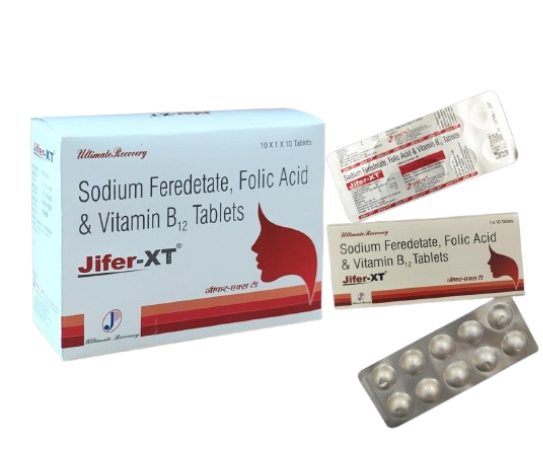



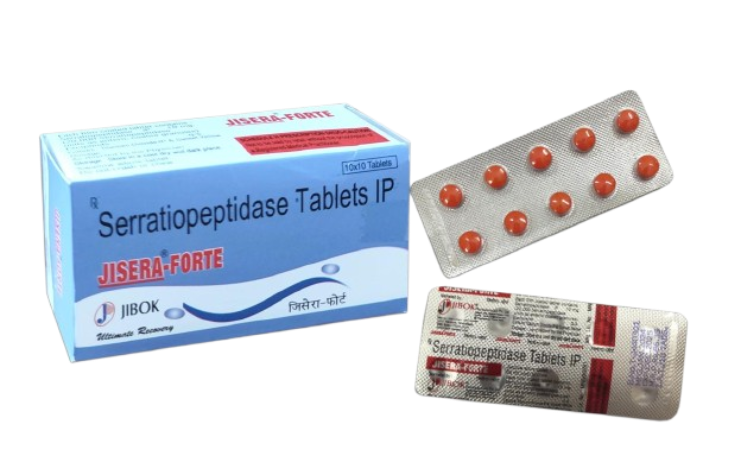
JISERA FORTE ™ Tablets Composition:-Each film coated tablet contains Serratiopeptidase 10 mg. (20,000 Serratiopeptidase units as enteric coated granules) Descriptions: - Improves the circulation at the inflammatory focus by breaking down abnormal exudates and protein and by promoting the absorption of the decomposed products through the blood and lymphatic vessels. Accelerates the elimination of sputum, pus and hematoma by breaking down and liquefying mucous secretions and fibrin clots. Indication: - Inflammation after operation and traumatic injury. As concomitant therapy for elimination of inflammatory edema and swelling in the following diseases Otorhinolaryngology.......................... Sinusitis Gynecology.................................. ... Engorgement of the breast Urology........................................... Cystitis, epididymitis Dentistry & Oral surgery.................... Pericoronitis of the wisdom tooth, alveolar abscess - Inadequate expectoration of sputum in the following diseases Bronchitis, bronchial asthma, and concomitant therapy with antitubercular agents in pulmonary tuberculosis. - Inadequate expectoration of sputum after anesthesia. Dosage: -Usually, for adults, one tablet orally, three times daily before meal without chewing. Dosage may be increased according to condition. Side effects: - The drug has certain side effects, that can affect individuals in different ways. The following are some of the side effects, that are often associated with the drug: Anorexia, Gastric Discomfort, Nausea Contraindications: - Patients with a history of hypersensitivity to the ingredients of this drug. Precautions:-In patients with blood coagulation abnormalities, severe hepatic and renal disturbances or under treatment with anti-coagulants, JISERA FORTE should be given under careful observation. JISERA FORTE may occasionally cause gastrointestinal disturbances such as anorexia, gastric discomfort and nausea. Administration should be discontinued when hypersensitive symptoms, such as skin eruptions. Drug Interactions: - There is no specific data to be described. Adverse Drug Reactions: - Skin: Stevens-Johnson syndrome, Toxic epidermal necrolysis, Rash, Pruritus Hypersensitivity: Shock, Anaphylactic symptoms Hepatic: Hepatitis, Jaundice Presentation: - JISERA FORTE tablets are available in blister strip of 10's. 10 such strips in a carton. Disclaimer: The above information is for general understanding of the visitor. Please consult a registered medical practitioner before taking the aforesaid medicine.
View Details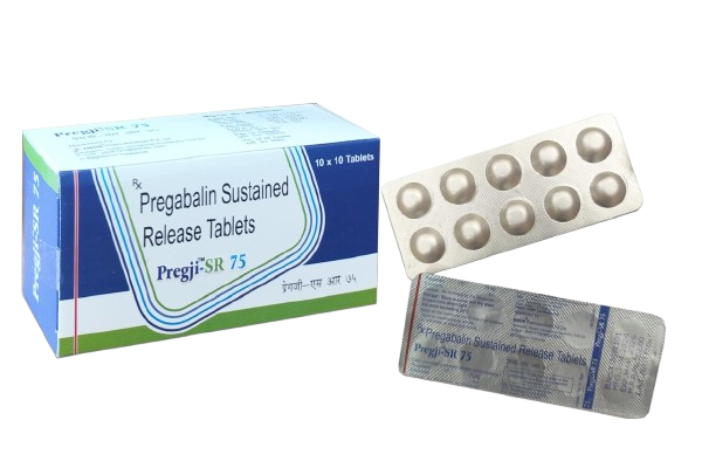


JIBRA™ D Capsules Composition: Each JIBRA™D hard gelatin capsule contains: Rabiprazole Sodium I.P. 20mg. (As enteric coated pellets) Domperidone B.P. 30mg. (As sustained release pellets) Description: Rabeprazole is a proton pump inhibitor and belongs to the class of antisecretory compounds (substituted benzimidazole), commonly known as ‘PROTON PUMP’ and Domperidone is a potent prokinetic with anti-emetic action. Indications: JIBRA™D is indicated for the relief of symptoms of 1. Dyspepsia 2. GERD 3. Nausea associated with acid peptic disorders 4. Post-operative nausea and vomiting 5. Chronic gastritis Dosage: JIBRA™D One capsule once daily. OR as directed by the physician. Contraindications: Contraindicated in individuals with known hypersensitivity to either of the active ingredients, and substituted benzimidazoles. Side effects: In general, JIBRA™D is well tolerated. However, few transient effects such as skin rash, allergic reactions, galactorrhoea, conjunctivitis etc. may be observed. Drug interactions: Rabeprazole : pH dependent interactions with digoxin and ketoconazole. Domperidone : (a). Concomitant administration of anticholinergic drugs may decrease the effect of domperidone. (b). Azole antifungals / macrolide antibiotic , increases plama levels of domperidone . Precautions: · Not recommended for continuous use or routine prophylaxis · Should be used with caution in patients with risk of arrhythmias · Pregnancy - Use not recommended in pregnancy. · Nursing Mothers - It is not known whether JIBRA™D is distributed into human milk, however, decision should be made to discontinue nursing or discontinue the drug, taking into account the importance of the drug to the mother. · Pediatric Use - The safety and efficacy of JIBRA™D has not been established in children. Presentation: JIBRA™D are available in strip of 10's. 10 such strips in a carton. Disclaimer: The above information is for general understanding of the visitor. Please consult a registered medical practitioner before taking the aforesaid medicine.
View Details

ALMOST ™ Tablets Composition:-Each uncoated tablet contains- Levocetirizine dihydrochloride 5mg. Descriptions:-Selective, long acting peripheral H1 receptor antagonist antihistamine. The increased polarity of Levocetirizine may decrease distribution of the drug into the CNS, resulting in reduce potential for adverse CNS effects. Tolerance does not occur. As it does not readily cross the blood brain barrier, it does not cause sedation or interfere with mental alertness or memory function. Indication: - Seasonal allergic rhinitis, perennial allergic rhinitis, ocular symptom (redness, lacrimation and itching), chronic idiopathic urticaria, urticaria dermographism, atopic eczema and contract dermatitis, also in acute allergic reactions due to drugs, food and insect bites. Dosage: - Adult and children above 6 years: 5 mg single intake orally. Children below 6 years: No adjusted dose. Elderly: Adjust dose on the basis of renal function. Pregnancy: Use with caution. Lactation: Use with caution as secreted in breast milk. Side effects: - All medicines may cause side effects, but many people have no, or minor, side effects. Check with your doctor if any of these most COMMON side effects persist or become bothersome when using Levocetirizine: Drowsiness; dry mouth; sore throat; tiredness. Seek medical attention right away if any of these SEVERE side effects occur when using Levocetirizine: Severe allergic reactions (rash; hives; itching; difficulty breathing; tightness in the chest; swelling of the mouth, face, lips, or tongue; unusual hoarseness); dark urine; fainting; fever; irregular heartbeat; mental or mood changes (eg, aggression, agitation); seizure; severe or persistent dizziness; shortness of breath; yellowing of the eyes or skin. Contraindications:- Hypersensitivity to levocetirizine, cetirizine, or its parent compound hydroxyzine. Patients with severe renal impairment (<10 ml/min creatinine clearance) should not be administered Almost tablet. Patients with rare hereditary problems of galactose intolerance, fructose intolerance, the Lapp lactase deficiency or glucose-galactose malabsorption should not take this medicine. Drug Interactions: - In vitro data indicate that levocetirizine is unlikely to produce pharmacokinetic interactions through inhibition or induction of liver drug-metabolizing enzymes. No in vivo drug-drug interaction studies have been performed with levocetirizine. Drug interaction studies have been performed with racemic cetirizine. Antipyrine, Azithromycin, Cimetidine, Erythromycin, Ketoconazole, Theophylline, and Pseudoephedrine Pharmacokinetic interaction studies performed with racemic cetirizine demonstrated that cetirizine did not interact with antipyrine, pseudoephedrine, erythromycin, azithromycin, ketoconazole, and cimetidine. There was a small decrease (~16%) in the clearance of cetirizine caused by a 400 mg dose of theophylline. It is possible that higher theophylline doses could have a greater effect. Ritonavir Ritonavir increased the plasma AUC of cetirizine by about 42% accompanied by an increase in half-life (53%) and a decrease in clearance (29%) of cetirizine. The disposition of ritonavir was not altered by concomitant cetirizine administration. Warnings and precautions:-Precaution is recommended with the intake of alcohol and in those who are on central nervous system (CNS) depressants. Avoid engaging in hazardous occupations requiring complete mental alertness, such as driving or operatingmachinery, when taking levocetirizine. Presentation:- ALMOST tablets are available in blister strip of 10's. 10 such strips in a carton. Disclaimer: The above information is for general understanding of the visitor. Please consult a registered medical practitioner before taking the aforesaid medicine.
View Details
JIBRA™ 20 Tablets Composition: Each JIBRA™20 enteric coated tablet contains - Rabiprazole Sodium I.P. 20 mg. Description: JIBRA™20 is used to treat certain conditions in which there is too much acid in the stomach. It is used to treat duodenal ulcers and gastroesophageal reflux disease (GERD), a condition in which the acid in the stomach washes back up into the esophagus. Rabeprazole is also used to treat Zollinger-Ellison syndrome, a condition in which the stomach produces too much acid. Sometimes rabeprazole is used along with antibiotics to treat ulcers associated with infections caused by the H. pylori bacteria (germ) .Rabeprazole works by decreasing the amount of acid produced by the stomach. Indications: JIBRA™20 for short-term treatment in healing and symptomatic relief of duodenal ulcers and erosive or ulcerative gastroesophageal reflux disease (GERD); maintaining healing and reducing relapse rates of heartburn symptoms in patients with GERD; treatment of daytime and nighttime heartburn and other symptoms associated with GERD; long-term treatment of pathological hypersecretory conditions, including Zollinger-Ellison syndrome and in combination with amoxicillin and clarithromycin to eradicate Helicobacter pylori. Gastric ulcer Peptic ulcer disease (PUD) Maintenance of healing of erosive or ulcerative GERD Healing of erosive and ulcerative GERD Healing of duodenal ulcers. Treatment of symptomatic GERD Treatment of pathological hypersecretory conditions (Zollinger-Ellison syndrome) Helicobacter pylori eradication to reduce risk of duodenal ulcer recurrence Dosage: When recommending a rabeprazole dosage, your doctor will take several factors into consideration, including the condition you are being treated for and any other medications you may be taking. The recommended dose with rabeprazole for people with symptoms of gastroesophageal reflux disease (GERD) is 20 mg once a day for four weeks. The recommended starting dosage for people with excess acid production is rabeprazole 60 mg a day. Your healthcare provider may choose to increase the rabeprazole dosage if symptoms continue or decrease the dose if side effects occur. Contraindications: hypersensitivity to rabeprazole, substituted benzimidazoles or any of components of its pharmaceutical forms. pregnancy: FDA Pregnancy Ratings: B lactation: Thomson Lactation Ratings: Infant risk cannot be ruled out. Side effects: Rabeprazole adverse reactions/side effects include: In clinical trials the most common side effect assessed as possibly or probably related to AcipHex was headache in 2.4% of patients vs 1.6% taking placebo. diarrhea vomiting nausea abdominal pains constipation meteorism dry mouth increased or decreased appetite asthenia headache anxiety sleeplessness vertigo thrombocytopenia granulocytopenia leukocytopenia skin eruption erythema myalgia arthralgia muscle or bone pain Drug interactions: Rabeprazole decreases the concentration of ketoconazole in the plasma (in 33%), increases the concentration of digoxin (in 22%), and does not interact with liquid antacids. Rabeprazole is compatible with any medicine metabolized by the CYP450 (theophylline, warfarin, diazepam, phenytoin). Precaution: Before taking rabeprazole, tell your doctor and pharmacist if you are allergic to rabeprazole, lansoprazole, omeprazole, pantoprazole or any other medications. tell your doctor and pharmacist what prescription and nonprescription medications, vitamins, nutritional supplements, and herbal products you are taking. Be sure to mention any of the following: cyclosporine, clopidogrel, digoxin, and ketoconazole. Your doctor may need to change the doses of your medications or monitor you carefully for side effects. tell your doctor if you have or have ever had liver disease. tell your doctor if you are pregnant, plan to become pregnant, or are breast-feeding. If you become pregnant while taking rabeprazole, call your doctor. Presentation: JIBRA™20 tablets are available in alu-alu strip of 10's. 10 such strips in a carton. Disclaimer: The above information is for general understanding of the visitor. Please consult a registered medical practitioner before taking the aforesaid medicine.
View Details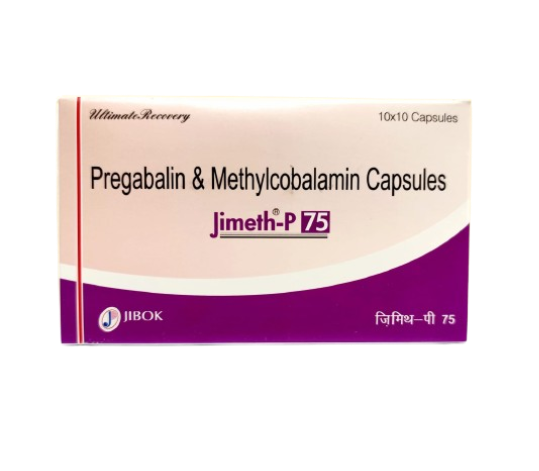
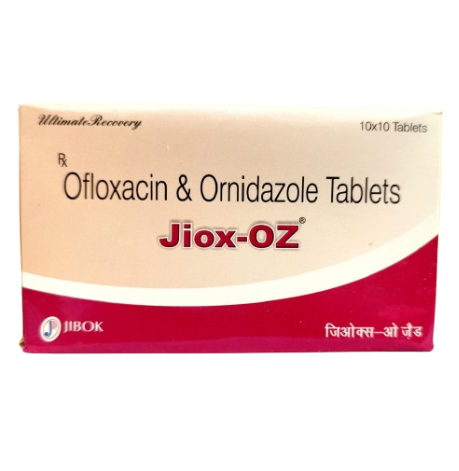
JIOX ™ OZ Tablets Composition: Each film coated tablet contains : Ofloxacin U.S.P. 200 mg. Ornidazole 500 mg. Description: Mixed aerobic and anaerobic infections are quite common in lower respiratory tract infections, diabetic foot infections, urinary tract infections, post surgical procedures, in acute diarrhoea and dysentery. Ofloxacin is one of the fluorinated quinolones with broad-spectrum coverage against gram-negative bacteria, gram-positive bacteria and also some anaerobes, whereas, Ornidazole is a 5-nitroimidazole derivative having broad-spectrum antimicrobial activity against gram-positive and gram-negative anaerobic bacteria and additionally broad-spectrum coverage against protozoas. Combining the two, results in a true broad-spectrum activity, to treat systemic infections of mixed aerobic/anaerobic etiology, in all situations where the time is critical and laboratory investigations are not feasible. Indications: 1. Oral therapy of moderate to severe systemic infections with a probability of having mixed aerobic and anaerobic bacterial infections. In some cases, cephalosporins and/or aminoglycosides may be co-prescribed wherever necessary. These infections include : GI infections like appendicitis, cholecystitis. Post-operative infections after abdominal/gynaecological operations. Lung infections like bronchiectasis, lung abscess, empyema, etc. Acute or chronic bone and joint infections. Infections in patients with Diabetes Mellitus. Infections in immunocompromised patients. Oral follow-up of parenteral therapy with Ofloxacin and Ornidazole or Tinidazole. 2. Acute diarrhoea or dysentery due to bacterial, protozoal or mixed causes. Dosage: Adults: 1 JIOX-OZ™ tablet twice daily after food for 5 days or as directed by the Physician. Contraindications: Known hypersensitivity to either ingredients. Severe renal insufficiency. Due to inadequate safety data, the drug should not be used during pregnancy, lactation and childhood, except where the risk to benefit ratio is justified. Side Effects: The side effects of the tablet could be due to the individual ingredients. These include the following: Ornidazole • Slight metallic taste, nausea, vomiting and gastrointestinal disturbances. • Urticaria, angioneurotic edema and other allergic states. • Dizziness, drowsiness, headache, ataxia. • Darkening of urine. • Rare instances of relapse of epileptiform seizures. Ofloxacin • Mild gastrointestinal upsets. • Rare cases of skin rashes, dizziness and headache. Precautions: Use with caution in mild to moderate renal failure, after appropriate dosage adjustment. Avoid alcohol during therapy and for two days after, in order to avoid risk of antabuse reaction. Ornidazole may augment the activity of oral anticoagulants, hence the dose of the latter may need reduction. Presentation: JIOX-OZ™ tablets are available in blister strip of 10's. 10 such strips in a carton. Disclaimer: The above information is for general understanding of the visitor. Please consult a registered medical practitioner before taking the aforesaid medicine.
View Details